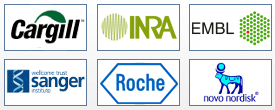Recruitment Trends to Change STEM Female Representation in 2022

In the fields of science, technology, engineering, and mathematics (STEM) women only make up approximately 28% of all employees. However, in the last few years parity has nearly been achieved in terms of male vs female graduates in several STEM subjects. This anomaly between graduate-level parity and workplace sub-parity highlights a growing concern among STEM recruitment professionals.
There are ample reasons why increasing female representation will help change businesses, the communities they serve, and the wider global economy. Firstly, there is a severe STEM talent shortage. Secondly, more female STEM workers on higher wages will help boost developing economies, but thirdly and more importantly, increasing female STEM representation will help nurture a sea-change in innovation - by placing women at the centre of innovation and facilitating solutions that meet the needs of both men and women.
However, from a STEM recruitment perspective, increasing female representation within your business can help build a more inclusive culture. The same can be said of developing BAME recruitment processes to help increase diversity. As business consultancy specialists McKinsey & Company noted: The more diverse a workplace, the more engaging and accepting the workplace becomes. This means developing a workplace culture that positively ties into the entire employee lifecycle - this is a major positive for HR leaders.
Focus on Culture - Overcoming the Pipeline Problem
One of the major issues around female talent acquisition within STEM-related business organisations predominantly surrounds the talent pipeline. According to Harvard Business Review, once female applicants are on track within an organisation’s talent pipeline they have a greater statistical chance of getting hired. But the issue, according to HBR, surrounds the pipeline onboarding process. Studies have found that when it comes to viewing an application on a job board or website, men are more likely to view the advertisement than women - 44% for female job seekers and 46% for male job seekers.
This is further compounded by the fact 16% of female candidates are less likely to apply for a vacancy. This means that female job candidates apply at a much lower rate than male candidates - even when they meet or exceed the job requirements for the role. The big question now is how do recruitment professionals and HR leadership, in the STEM sectors, create processes to help reach this under-represented talent base?
STEM Recruitment Challenge - Engaging and Onboarding Women in The Talent Pipeline
To help this process succeed, HRM leadership and recruitment partners will need to re-evaluate the information that they use to engage with prospective female talent. The needs and wants of male and female job hunters are varied but on gender grounds - there are numerous differences. Here are some examples.
By including salary and employment benefits - like health and wellbeing, discounting offers etc. - female STEM applicants are much more likely to engage with the application process. Studies have found that this is 10% more important to female job hunters than their male counterparts. By pushing salary transparency to the centre of job adverts, STEM businesses and organisations can help satiate a key need from prospective female talent.
Another element is flexible working arrangements. According to the Our Language Matters Report, by placing flexible working arrangements front and centre in the job advertisement, would-be female candidates realise that employers are serious about commitments to gender equality and fair pay.
By developing language, using transparency, outlining commitments to equality and diversity, organisations in the STEM sectors can reach otherwise invisible female prospective candidates and help turn the tide on the ongoing STEM female recruitment crisis.



